Inside: You don’t need to be around minimalism long before you get the sense that there are minimalist rules you should be following, at least if you want to be a “real” minimalist. But what if you don’t need to follow the rules, after all?
I put the toaster and butter dish back in their respective cabinets for what felt like the hundredth time.
I put the paper towel holder back underneath the sink. Again.
I wiped down the counters and admired their emptiness. Ahhhhh: so satisfying.
And how long did that last? All of ten minutes.
Right up until my oldest got out of bed and pulled out the toaster and the butter dish to make herself breakfast.
She complained again loudly, “Mom, would you PLEASE stop putting this stuff away?! We use them all day, every day! Just keep them on the counter.”
Wait for it, wait for it….
Five minutes later: “And WHERE are the paper towels?!!” There it is.
I smile now remembering the exchange, but at the time, I was so daggone frustrated.
No matter how hard I tried, I couldn’t get my family to follow what I considered to be the most basic of minimalist rules: keep everything off the counters.
And if they couldn’t follow the rules…well, could I even call myself a minimalist?
You Might Also Like: The Pros and Cons of Minimalism, According to a Minimalist
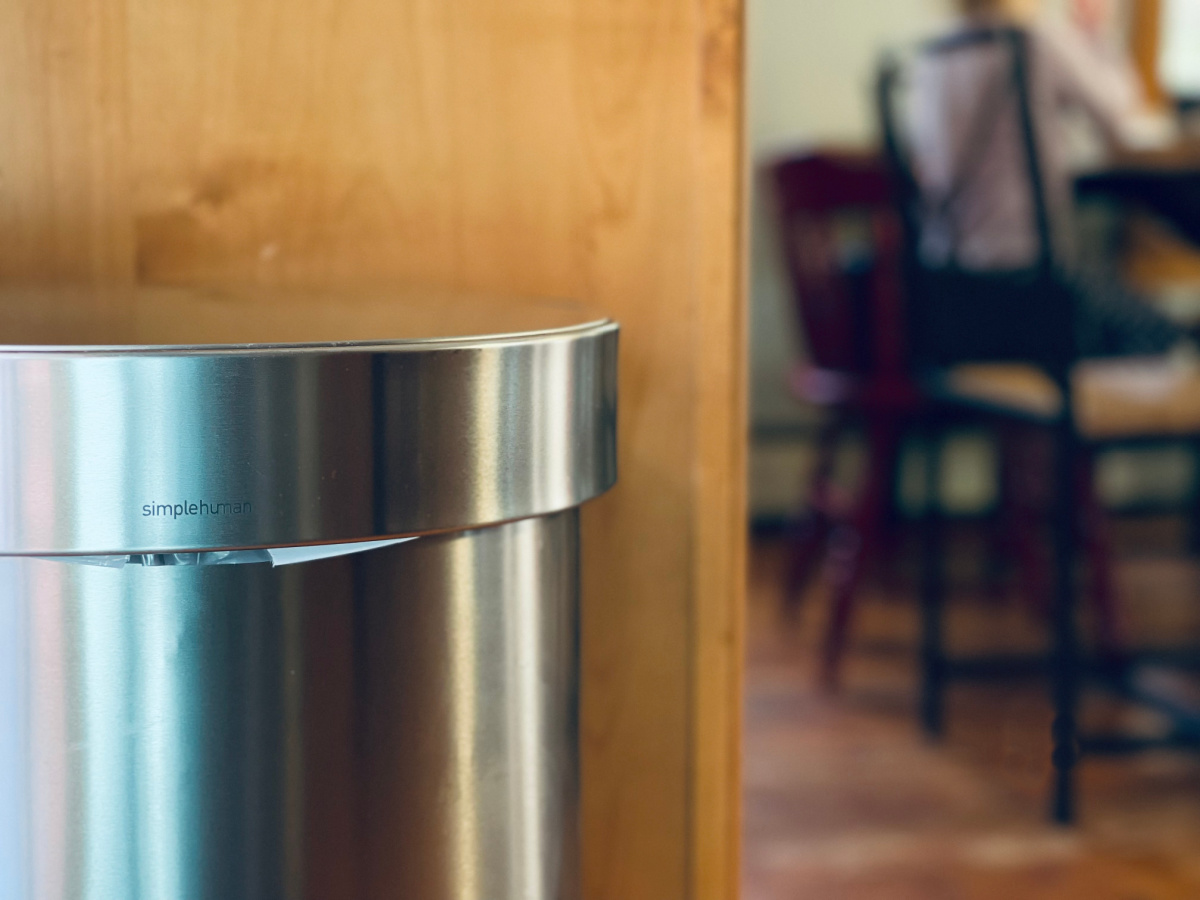
7 Minimalist Rules You Can Break If You Want To
This post probably contains affiliate links, which means I may earn a commission if you make a purchase through those links. As an Amazon Associate, I earn from qualifying purchases. You can find our full disclosure HERE.
I’ve dipped my toes in a lot of counter-cultural movements over the past several years.
Evangelical Christianity. Unschooling. Minimalism. F.I.R.E.
What do they all have in common? If you’re not careful, they can all gravitate towards fundamentalist extremes, and fundamentalism always comes with a whole lotta rules.
The “leaders” might make them up the rules, but perhaps even more often, the “followers” do.
Why? Because rules tell us who’s in and who’s out. Who can wear the label “minimalist” or “unschooler” or “Christian”.
The heart behind it isn’t necessarily bad.
We’re all looking for connection and belonging, and rules/labels make it easier to determine where – and with whom – we might find both.
(Rules also tell us if we’re doing it – whatever “it” is we’re trying to do – “right”.)
I guess I’m growing because over the past few years I’m realizing that maybe you don’t need to follow all the rules, after all.
Maybe you can be secure in whatever identity you’ve chosen for yourself – minimalist or unschooler or writer.
And maybe the rules were never really “rules” to begin with. And even if the rules do in fact exist, maybe you don’t actually need to follow them.
Here are seven minimalist rules I don’t always follow, and I still call myself a minimalist.
1. Always buy the highest quality products you can afford.
As we slowly moved out of our extremely frugal days, I’ve experimented with this rule quite a bit, and my opinion has changed, even as recently as the past few months.
I’ve tried the pricey wool shirts (these seem to be worth it – time will tell) and expensive pans, Ruggable rugs and expensive kitchen trash cans.
I’ve discovered that yes, sometimes high quality is worth it. And other times, it doesn’t make much of a difference in longevity.
I’ve replaced $60 non-stick pans that were chipping and toxic with $15 ceramic pans from Aldi that have held up just fine. We bought a cheap toaster that’s still going strong two years later.
My Crocs rain boots – that they sadly don’t make anymore – have held up really well for the past seven years. It turns out I didn’t need Hunter rain boots that cost four times as much.
I love the thrifted picture frame with cheap digital art just as much as the expensive canvas I splurged on for Christmas.
The worst part about trying to buy high quality things? Reading through reviews and deciding whether or not the high price tag actually means high quality. It’s exhausting.
If you think a high quality item is worth the extra money (and you have the money in your budget), go for it. And if you don’t, get the cheaper thing.
The heart behind the rule? Be intentional with your purchases and buy less stuff.
Related: 21 Minimalist Habits to Keep Your Home Clutter-Free for Good
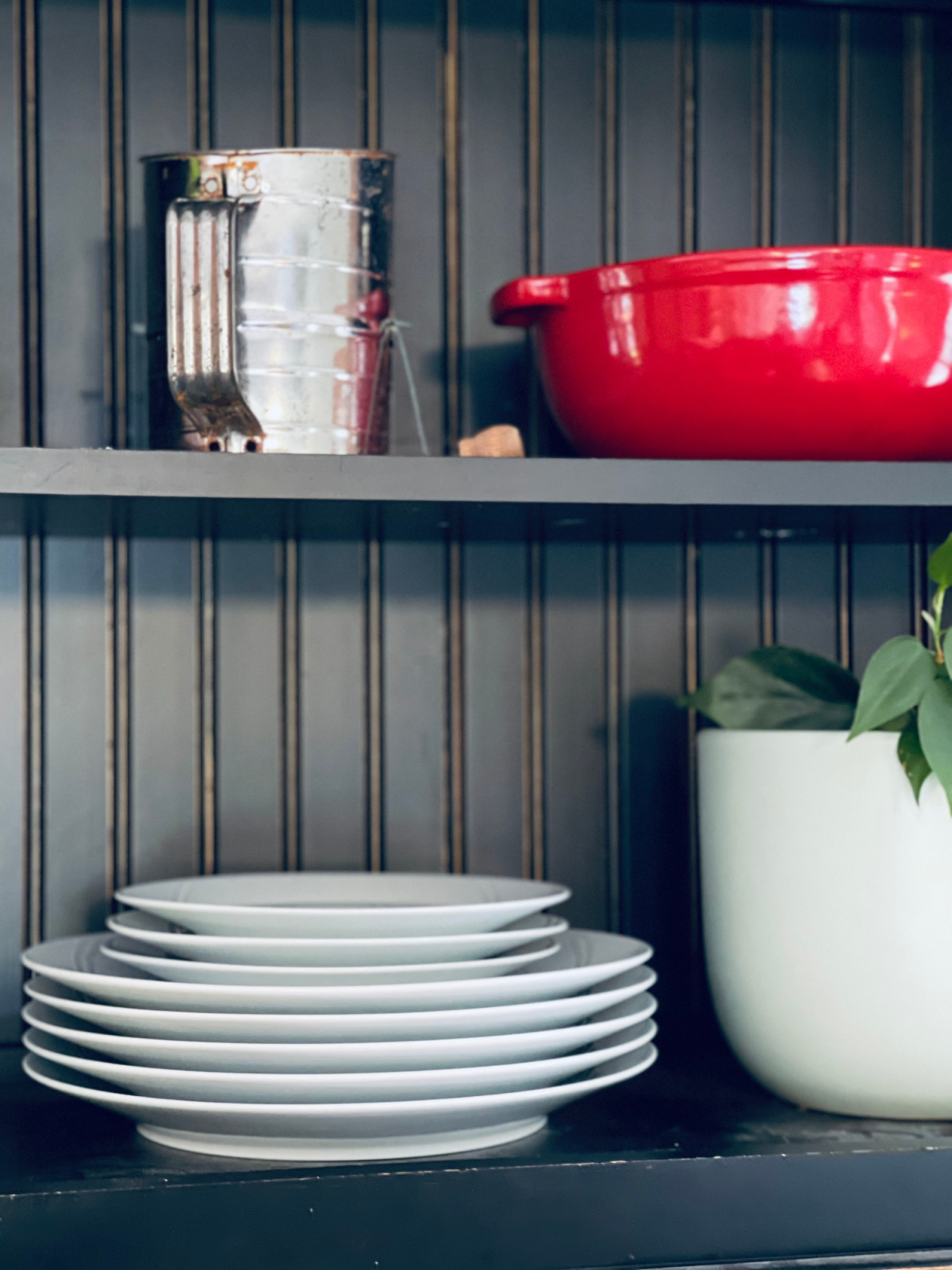
2. Own one place setting per person.
This rule is especially popular if you have kids.
One place setting per person. One water cup per person. One coffee mug per hot-beverage-drinking person.
And if that works for you, please – do it! But in our house, it really doesn’t work.
We are home all day, every day. We cook multiple meals per day.
For our minimalist kitchen, we’ve settled on a few plates and cups per person, and 1-2 bowls per person (a cereal bowl and a “snack” bowl).
It’s enough so that we aren’t washing our own plates after every single meal or snack, but not so much that we’re hand-washing a ton of dishes because they won’t all fit in the dishwasher at the end of the day.
Find your own happy place with the dishes.
3. Get rid of duplicates.
I wrote an entire post on this one, so I’ll try to be brief.
If you’re keeping duplicates you never use because you want to make sure you have back-ups just in case, these might be clutter for you.
But if having duplicates makes your life easier? If you use all of them all the time? Keep them.
I’m so glad we have multiple pairs of scissors, for example. Because even with multiple pairs, I can’t always find one when I need them!
Break the rules: keep the duplicates.
Related: 7 Duplicates I’ll Never Declutter (Even Though I’m a Minimalist)
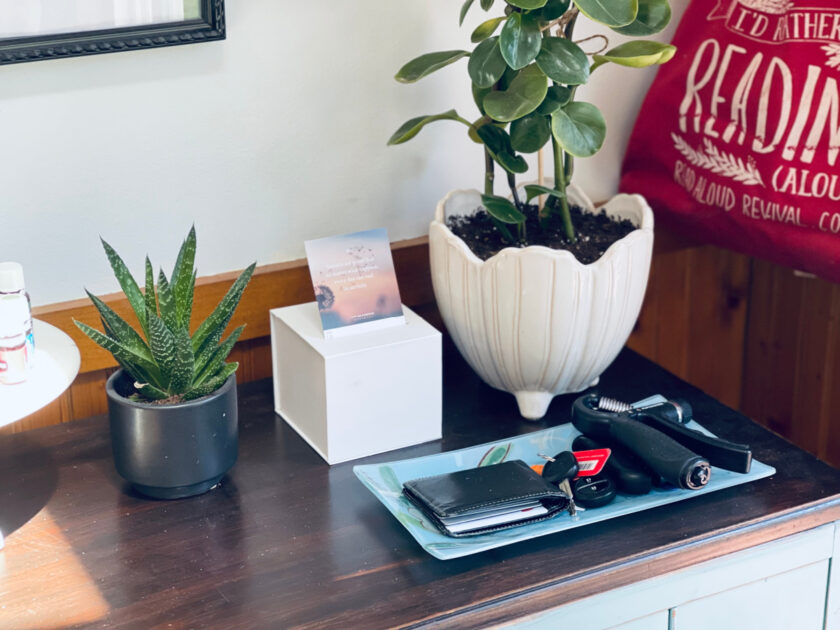
4. Keep every single thing off the counters.
Joshua Becker is pretty well known for his emphasis on the “convenience fallacy” as a rule for not leaving things on the counter.
“There are certain places in our homes where we leave out items because we think it is more convenient.”
Joshua Becker, The Convenience Fallacy
The kitchen is the most often used example. People leave out toasters and paper towel holders and tea kettles.
Personally, I love a nice clear counter. I’d happily store all of those things in an easily accessed cabinet.
My family? Not so much.
The truth is, I’m not the only one living here. And we do use those items all day, every day – literally.
So I leave out the paper towel holder and the toaster oven (that bad boy wouldn’t even fit in a cabinet) and the toaster AND the butter dish next to the toaster.
I have a dish for my husband’s keys and wallet. Mine are tucked away, out of sight in a drawer.
The surfaces I can keep clear, I keep clear.
Break the rules when they don’t serve you and, more likely, your not-as-minimalist family.
5. Throw away all worn-out clothing: no exceptions.
Marie Kondo was my first introduction to this minimalist rule.
In her book The Life-Changing Magic of Tidying Up, she encourages you to throw away worn-out clothing. Anything with holes in it has got to go.
And if you sleep in that clothing? HORRORS. You need proper pajamas ASAP.
I followed her advice the first time around. While I forever appreciate her getting me started with minimalism, my first round of decluttering left me without a very bare wardrobe (because I didn’t have a lot of money or time to replace what I threw away).
Cue: major decluttering regret.
Sorry to disappoint, Marie, but now I “recycle” my comfy, well worn t-shirts with a few tiny holes and wear them as pajamas and to do yard work or to paint in.
They’re also available in case we have a particularly rough week and don’t get to the laundry.
Do I set limits on how many I keep? Sure. When the dresser drawer is uncomfortably full, I throw away the ones in the worst condition.
(P.S. Marie, I sleep just fine in my non-pajama pajamas.)
Related: 7 Effective Ways to Minimize Your Wardrobe (& Take Back Your Closet)
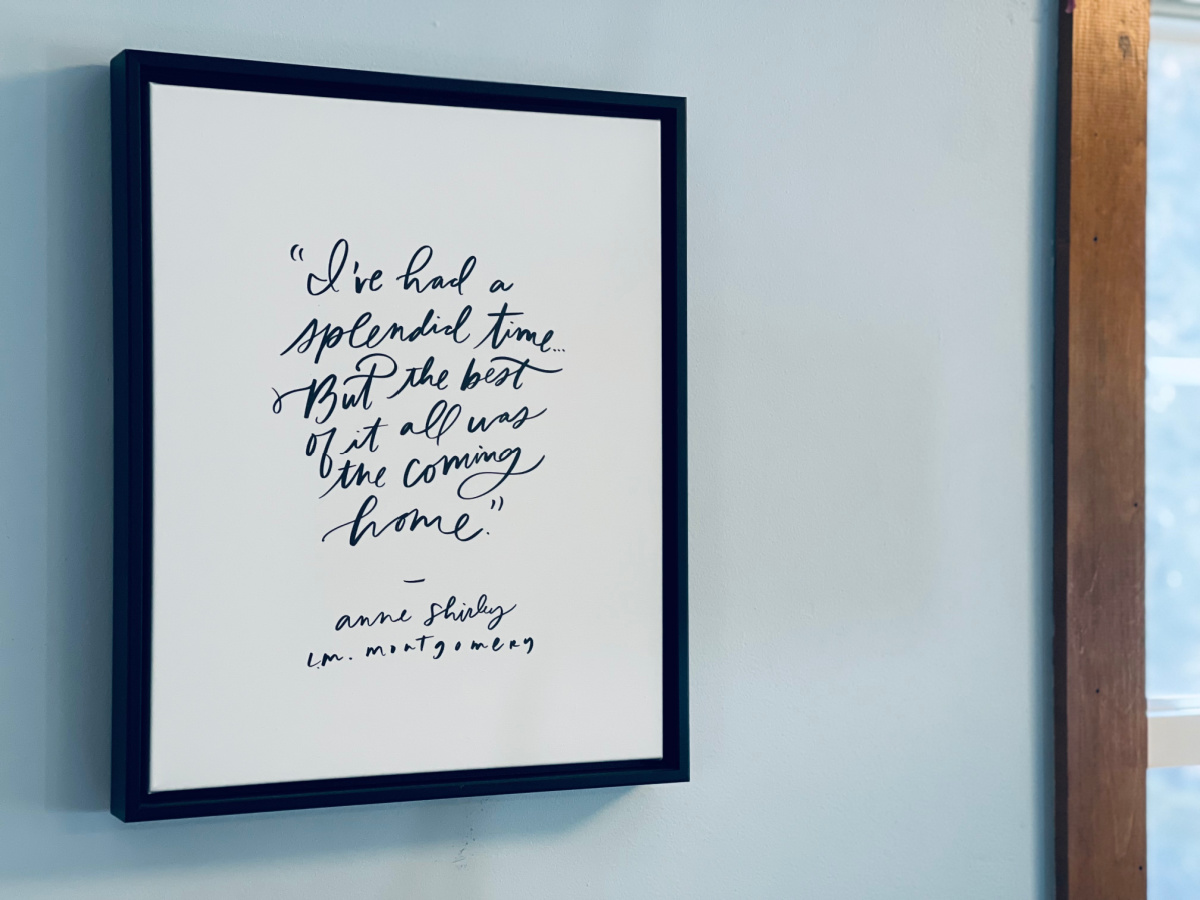
6. Decorate with white/beige/gray colors, and keep the walls bare.
Of all the minimalist rules I don’t follow, I saved the most ludicrous one for last.
There is a huge difference between minimalism as a decorating trend and minimalism as a lifestyle.
I know minimalists who love bold colors and art on their walls. I also know minimalists who find white, bare walls calming – it suits them.
I fall somewhere in between. I don’t love every wall filled with art, but sometimes, empty spaces bother me.
I try to give bare walls a chance before I fill them. After a few months, if it still feels empty and lacking, I’ll fill it.
Ultimately, your home should be somewhere you love to be – if color and full walls make you happy, do it!
7. Get rid of clutter as fast as possible.
Many minimalists advocate for you to get rid of your clutter right away.
Drop it off at the donation center. Throw it all away. Don’t worry about the environment, and don’t feel guilty.
Whatever you do: get it out of your house right away.
For some, this is really good advice. Keeping boxes and boxes of donations might lead to the stuff creeping back into their homes.
Selling it can take a lot of time and energy, depending on where you live. And some things really do belong in the trash.
But you don’t have to follow this rule. You could take your time, list things in buy nothing groups or sell them at a low-key yard sale.
I’ve done both: I’ve rehomed things we don’t need slowly but surely, and I’ve also dropped things off at thrift stores.
Do what feels right to you – for your unique circumstances at the time of decluttering.
Related: Please Don’t Declutter Your Home in a Weekend. Here’s Why
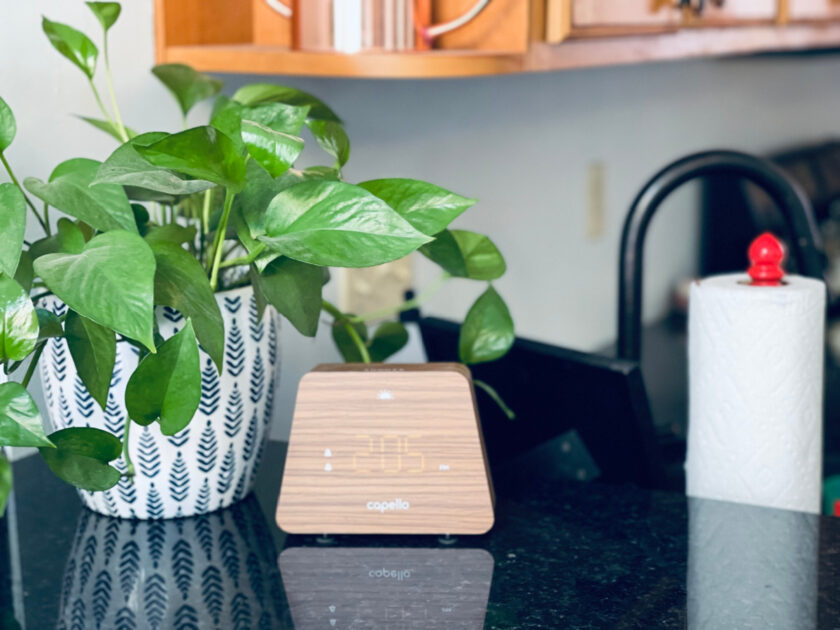
The Heart of Minimalism? Be Intentional. Own Less Stuff.
At the end of the day, minimalism is about owning less stuff.
Less stuff equals less money spent (therefore less time spent earning more to buy more) and less time spent maintaining said stuff.
It means less time spent cleaning and organizing. Less time deciding what to buy next, too.
“Less” doesn’t equal a specific number of items. Less is subtracting whatever amount that makes the space you need to thrive.
Ultimately, minimalism should make your life easier – not harder.
Hang onto the rules that serve you. Forget the rest.
I guess for the next several years, I’ll have to settle for mostly clear counters. And that’s o.k. because my people matter a whole lot more to me than following minimalist rules.
Read Next: 8 Decluttering Truths Beginners Need to Know (Before They Start)
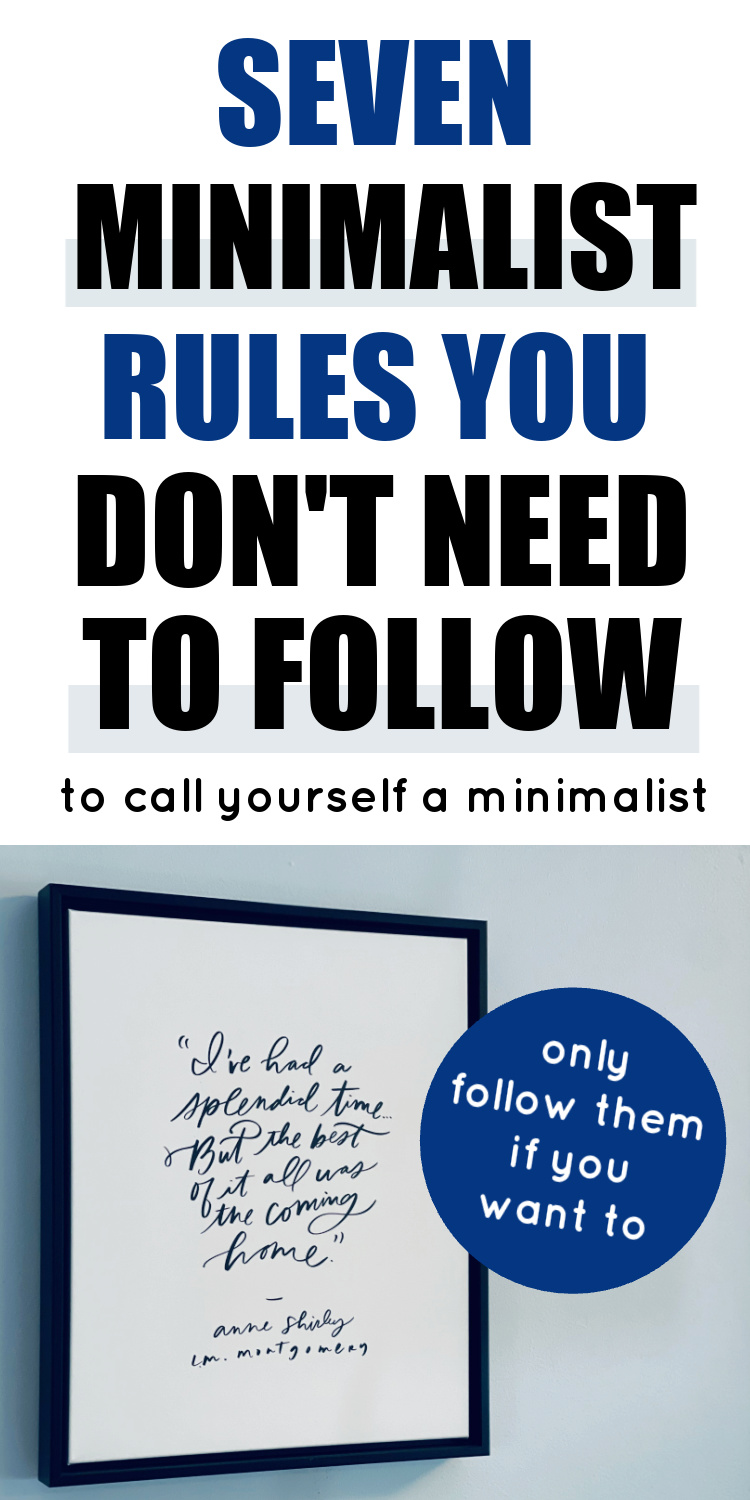

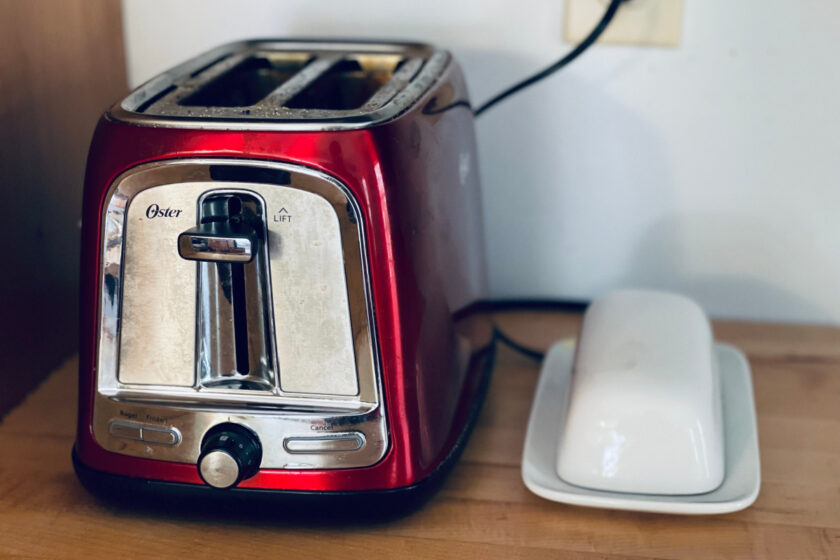
Love the website and the tips. Totally came across this website by accident andI read when I have the time. As a Follower of Christ and a person who has embarked on a clean-de-clutter-buy less mindset, I love the tips here. I agree with the tips in the articles – don’t be too hasty to toss everything mindset, and be comfortable in how you live.
I once thrifted a huge jar of paper clips thinking I was being a minimalist, only to find out days later they were needed. Thank goodness for Amazon. I now clean and declutter in small batches with intent and purpose, which has led to less regret and “why did I give that thing away, I need it” moments? For old clothes, if I can no longer use or repurpose my worn clothes (unable to patch, mend, re-sew, repurpose into a chair cover or pillowcase) then I cut the clothes up into cleaning, dusting and polishing rags. Worn, ripped towels work great for this as well. Take care all.